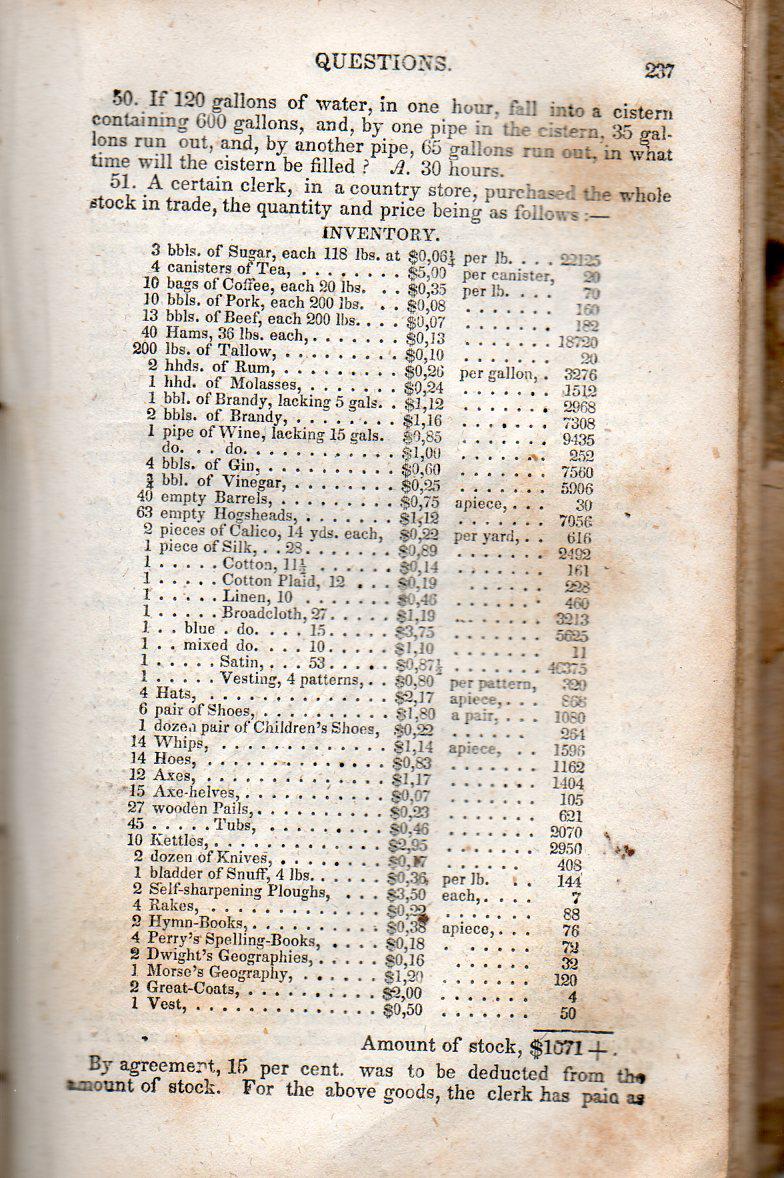Bookseller and blogger John Ptak recently featured this page, from a pocket-sized arithmetic book published in Connecticut in 1836. The list gives sample prices for the stock that a clerk in a country store might buy in order to flesh out a typical inventory.
In setting up this hypothetical store, the author of Practical and Mental Arithmetic on a New Plan … left us some insight into the kinds of goods an establishment like this might have offered in the fourth decade of the 19th century. The list also shows us how much money an entrepreneur going into business as a store owner might have been expected to front in order to stock up a new store. At a time when farm laborers in Indiana were paid $9 a month, with board, the cost of entry to this business seems rather steep.
Many varieties of food and drink in this imaginary store’s stock would have come in barrels (abbreviated “bbl”): gin, vinegar, brandy, pork, and beef (probably salted). Rum and molasses were tallied in hogsheads (“hhd”), a standard measure of volume usually used for alcoholic beverages.
This hypothetical clerk also stocked cloth, hats, shoes, axes, kettles, textbooks, and knives—all the items a 19th-century country clientele might have relied upon such a store to provide, in a time before widespread availability of mail-order goods.

JF Ptak Science Books